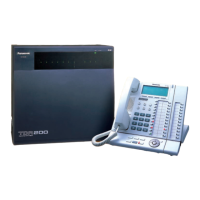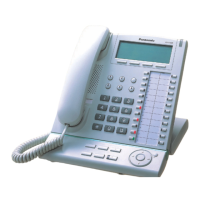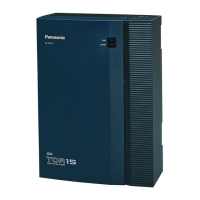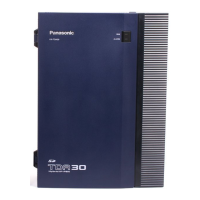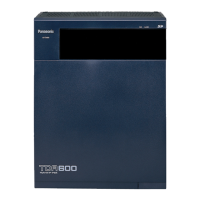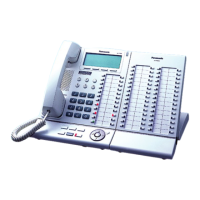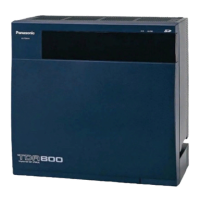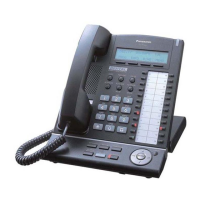1.27 Networking Features
Feature Guide 221
Feature References
1.18.2 Flexible Buttons
Operation References
1.7.5 Calling Line Identification Restriction (CLIR)
1.27.2.3 Network Direct Station Selection (NDSS) (KX-TDA0920
required)
Description
When PBXs are networked using ISDN or IP-GW cards, it is possible to assign flexible buttons as Network
Direct Station Selection (NDSS) buttons. These buttons are used to monitor the status of extensions
connected to other PBXs in the network, and to make or transfer calls to those extensions with one touch,
like normal DSS buttons. This allows the functions of an operator to be centralized even when there are
offices in remote locations.
NDSS buttons show the status of the monitored extension as follows:
[Example Network]
[Programming Procedure]
1.
Routing Table Assignment
TIE Line Routing and Modification tables must have been programmed in advance for all PBXs in the
network, to allow calls to be made and transferred between PBXs (→ 1.27.1 TIE Line Service).
In the programming example that follows, the PBXs in the network use the Extension Number method,
as shown in the illustration above. However, the PBX Access Code method can also be used.
2. Network PBX ID Assignment
Assign a Network PBX ID to each PBX in the network.
There are three types of Network PBX ID:
Light pattern Status
Off The monitored extension is idle.
Red on The monitored extension is busy or has set DND for CO line calls.
PBX-1
Network ID 1
PBX-2
Network ID 2
Monitor
extensions
2001 (busy)
2002 (idle)
4001 (idle)
4002 (busy)
Monitored
extensions
PBX-3
Network ID 0
PBX-4
Network ID 3
Extn. 2001
Extn. 2002
Extn. 4001
Extn. 4002
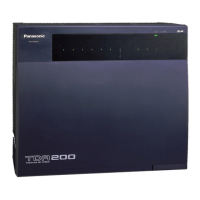
